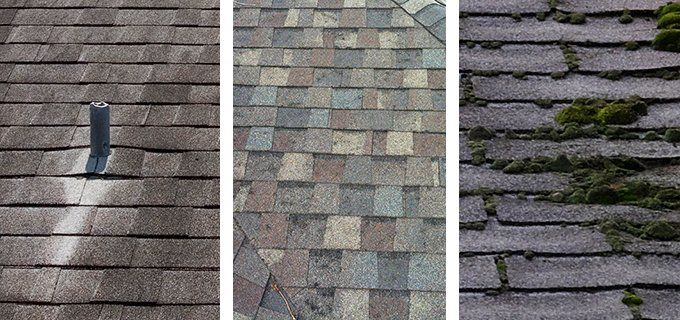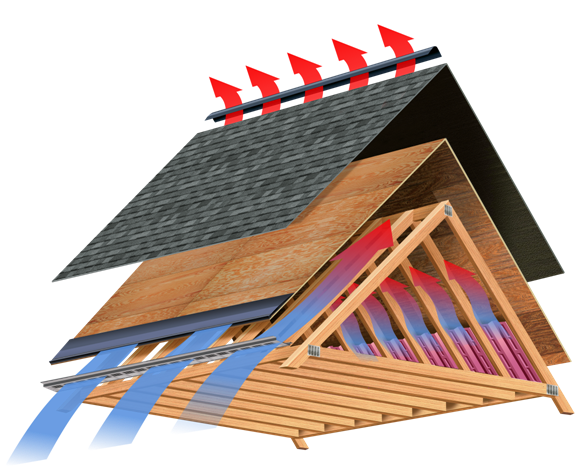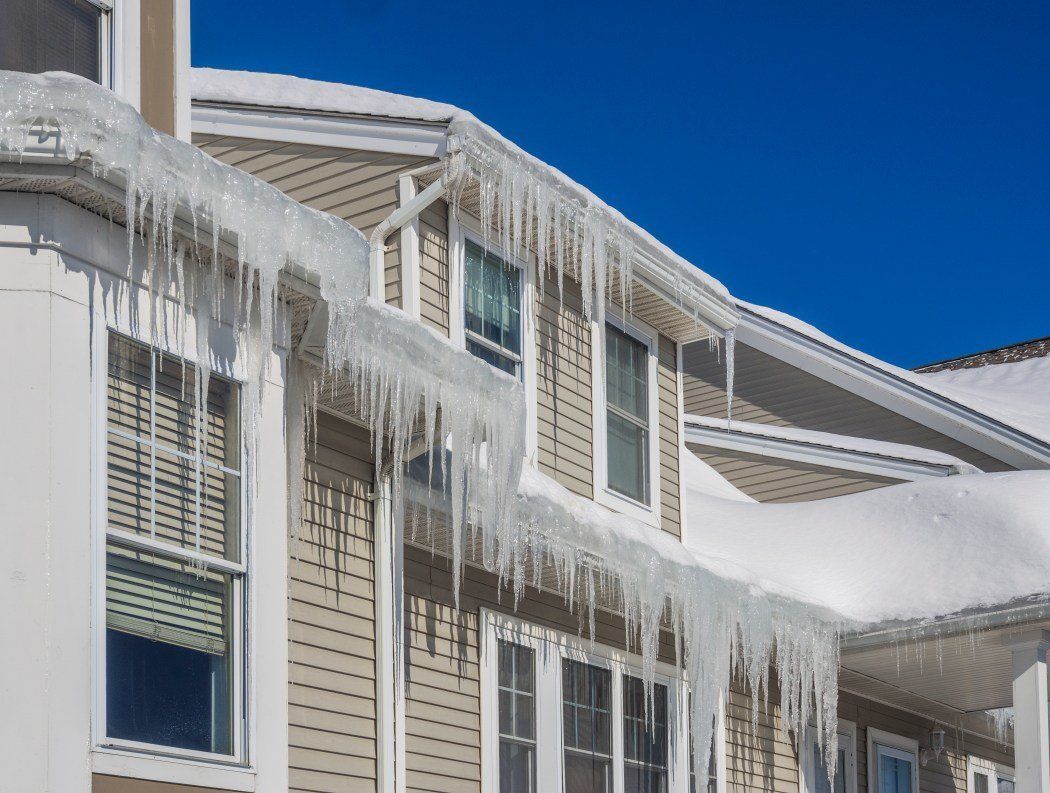Blog
Blog

23 May, 2023
As the snow begins to melt in many parts of the country, now is the time to clean up for spring. Winter weather can be a shingle’s enemy (especially in areas that had to deal with so many storms), so it’s important for contractors to reach out to homeowners to help them with their roof’s spring-cleaning and inspection. Not only will this make a home look better, it can also extend the life of the roof. Here are some tips to share with your customers on what to look for during spring cleaning. Tree limbs. Make sure tree limbs don’t touch a roof. If they do, they can easily scrape over the shingles and loosen the protective granules. This will severely reduce the life of a roof. Trim trees close to the house to avoid any limbs touching the roof surface. Leaves and pine needles. A little leaf or a few pine needles are fine, but if they collect and are deep enough to hold moisture, they need to be taken off the roof. Anything that traps moisture will cause mildew to form, block gutters, or cause extra weight on the roof. A rake or air blower can be used to clear the roof, but take care not to damage the shingles. Moss. Cutting back trees and removing leaves will reduce moss growth, as it will allow sunlight to dry up the moisture that moss thrives on. While there are chemicals available on the market to get rid of moss, the runoff can cause damage to plants. Another solution is to nail zinc or copper strips to the ridgeline; as rain washes across, it creates an environment where moss cannot grow. Mold. Discolored streaks on a roof indicate there is mold, algae, or fungus, which can eat away at the roofing material and, ultimately, cause leaks. A treatment of chlorine bleach or copper sulfate solution applied with a garden sprayer can kill the mold. GAF manufactures algae-resistant shingles that have a specially formulated granule that inhibits algae growth, in addition to shingles with StainGuard® Protection. Finally, do not power wash shingles! It can dislodge granules and cause premature shingle failure. Gutter damage. Heavy snow from the winter season can result in gutter damage while leftover fall leaves and debris can lead to clogged gutters. Before the springtime rain, check to make sure water can flow easily through the gutters and fix any loose nails that are preventing the gutters from sitting tightly along the roof line. Missing shingles, chimney, and flashing. A complete inspection by a contractor can uncover issues with missing shingles, chimney damage, or flashing around chimneys, vents, or other bends in the roof. Dealing with these potential issues in a timely manner will allow your roof to stand strong through the next season of weather challenges—and for many years to come.

By Anthony Montagna
•
09 Oct, 2021
Repair or replace? If your roof isn’t very old and you spot a few loose or damaged shingles, you may be able to just replace them. But for broader or more extensive damage, it may be time for a new roof. The key is a regular roof inspection so you know what’s going on up there. What roof damage looks like Roof damage comes in all forms. Know what to look for.

By Wendy Helfenbaum
•
19 Aug, 2021
There are two sides to every story—but what some homeowners may not realize is that there are also two sides to most roofs, too. Beyond the professionally installed roofing system that protects your house from water on the outside, an attic ventilation system works from the inside to protect your home from heat and moisture. How Does an Attic Ventilation System Work? Hot air rises naturally, so intake vents located at the bottom of your roof under the soffits allow cool air from outside to enter the attic. This fresh air keeps flowing through the attic before escaping back outside through the hot air exhaust vents, which are located on the top of the roof. This is a natural process called passive ventilation—one of the most common and effective ways to achieve a balanced attic ventilation system. The amount of exhaust ventilation at or near the roof ridge should never exceed the amount of intake ventilation at or near the roof's soffit. Why Is Attic Ventilation Important? If your attic is not properly ventilated, the space can reach more than 160 degrees Fahrenheit, particularly in the summer heat. Those high temperatures risk overloading your home's air conditioning system. Without adequate ventilation, a buildup of heat and moisture in the attic can cause your roof system components and structural supports to degrade over time, potentially reducing their service life. It's crucial to release that excess heat. During the winter months, the hot, moist air in your attic along with the sun, can heat up your roof and melt the snow that accumulates on it. When that running water then refreezes as temperatures dip, ice dams can form on the colder roof edges under the eaves. These ice dams can also cause water to work its way back up under your shingles, damaging the roof and potentially leading to leaks inside your house. Here are a couple of more reasons why ventilation is so important. It Reduces Excess Moisture As we go about our daily activities, such as cooking, showering, and even breathing, we emit gallons of water into the air. That moisture can make its way up into your attic. Once that moist air hits a cooler surface, such as the underside of your roof deck, condensation forms. As this condensation accumulates, it can promote mold, mildew, and even wood rot. Your roof's insulation can also absorb humidity, reducing its effectiveness. Proper ventilation for your attic helps remove this water vapor from your home all year round. It Cuts Energy Costs A properly ventilated attic can also help lower energy costs. Improving air circulation in the summer removes hot air, keeping your ductwork and inside air cooler. This allows colder air to flow through your HVAC system, preventing strain on your air conditioning and cutting cooling costs. Your new roof system is about much more than just its shingles. Full protection both outside and inside your home stems from proper ventilation, which helps reduce damaging moisture, lower the temperature in the attic space and decrease the risk of harmful ice dams. Ensuring your attic is ventilated helps extend the life of your roof, so it can take on any season for years to come. If you're looking to discuss attic ventilation in your home, you can reach out to a contractor certified by GAF*. Tony's Mountain Construction llc 732-566-0944

By Anthony Montagna
•
07 Aug, 2021
U nderstanding the cost of your roof When preparing your estimate, roofing contractors consider many variables that are specific to your roof, your preferences, your budget and goals, and even where you live. How roof costs are determined While you ultimately need to know the overall price of your new roof, roofing contractors get to that estimate by adding up several factors. To deliver accurate cost estimate, roofing contractors do the following: 1. Measure the roof - Most measurements are obtained digitally, using satellite imagery or drone technology, and include the slope, peaks and overall complexity of the roof. 2. Do an inspection - With a thorough roof inspection, contractors are able to assess the condition of your roof and determine the project scope. 3. Recommend products - Next, your contractor will outline the best roofing system materials for your project (shingles, ventilation and accessories) and warranty options. 4. Calculate costs - With the information above, your contractor can bring all the costs together: labor, materials, warranty, and applicable fees and services (permits, preparation, clean up). key factors that impact roof quotes Size The size of your roof is the most significant cost factor. Divide the square footage by 100 to get the approximate roofing square number for your estimate. A cost “per square” usually includes both materials and installation. According to the U.S. Census, the average residential roof in the United States is 17 squares, or approximately 1700 square feet. Materials Asphalt shingles are the most popular and least expensive type of residential roofing material. A metal roof, or roofs made with wood, slate, clay or solar tiles typically cost more. Roofs made from these other materials may have other benefits, like providing solar power to your home for example, but there are other trade-offs you will want to consider. Complexity Steeper roofs require more need for staging, safety precautions and will likely take longer to install. The pitch also determines the type of underlayment needed for the highest level of fire safety. Roofing contractors also calculate features like chimneys, skylights and ventilation pipes that they need to work around, and complexities like the number of facets–or faces–the roof has. Location You can expect to pay a different amount for a roof replacement depending on where you live in the U.S. Cost fluctuations may reflect the general cost of living differences in each region, and possibly the different material needs, or local code requirements, based on varying climates and other factors

By Anthony Montagna
•
17 Feb, 2021
Looks can be deceiving. For instance, there are few things as lovely as icicles hanging from roof eaves and gutters. In some regions, they dangle for months, like crystal jewels, sparkling in the sunshine. And yet, in many cases, they signal that the roof may have a problem with ice dams that needs attention before water seeps into the house. Ice dams — literal dams made of ice — usually form at eaves and gutters and prevent snow- and ice-melt from leaving the roof. They’re often caused by a temperature imbalance in the attic. As heat rises in the house and makes its way into the attic, the upper portion of the roof may warm faster than the lower portion at the eaves. If the upper portion becomes warm enough to melt snow (above 32°F) while the lower portion remains below 32°F, snow will melt, flow down the roof, and refreeze before it can flow off the edge. This can also be compounded by naturally rising ambient temperatures during the day and falling temperatures at night. What results is a dam, which will hold the remaining water, snow, and ice on the roof. There are two main causes of this kind of temperature imbalance: > Poor attic insulation. Insufficient or deteriorated attic insulation can allow warm air to move from the heated areas of the house to the attic space. > Lack of proper attic ventilation. Properly balanced attic ventilation helps slow snow melting by allowing cold air to enter the attic space, in turn driving out warmer air. This reduction in warm attic air helps decrease the chance of snow melting on the roof. Why are ice dams a problem? Almost all roofing materials are designed to shed water. As ice melts and refreezes, it can damage the shingles and other parts of the roof system. And when a growing ice dam pushes water back up the roof slope, that water may flow under the shingles and penetrate into the roof system or house below. That’s why GAF factory-certified roofers will always recommend a layer of strong protection like WeatherWatch® or StormGuard® Leak Barrier. These products help prevent leaks due to water backing up in your gutters, wind-driven rain, and, of course, damaging ice dams. They are self-adhering membranes that seal around fasteners and other protrusions in the roof, helping to protect the most vulnerable areas of your roof against leaks. What can I do about ice dams? Here are 3 steps you can take to prevent ice damming this winter: 1. Remove snow from the roof. Depending on the size and accessibility of your roof, you can use an extendable snow roof rake to (carefully) pull fresh snow off the roof before the melt-and-freeze cycle even begins. Snow and ice removal can be dangerous work, though, and if done improperly you might risk injury to your shingles – or more importantly – yourself! We strongly encourage you to engage the services of a professional to assist with snow and ice removal. To find a GAF factory-certified contractor in your area who may be able to help, search here. 2. Ventilate. Ensure you have a properly-balanced attic ventilation system that allows fresh air to continuously move through the attic space under your roof. To find out how much ventilation you should have, use our ventilation calculator 3. Insulate. Proper attic insulation will do more than prevent ice dams; it can also help reduce your heating costs by keeping warm air in your living space, where it belongs.

By Anthony Montagna
•
22 Jan, 2021
When it comes time to talk to a contractor about doing a residential roof repair or replacement, it's good to know the different parts of a roof and the components of a roofing system. Important Structural Components Below the Roof A lot that can't be seen from the ground goes into supporting a roof. Here are some of the parts of a roof that make up its underlying structure: Rafters — A structural framing component that runs from the ridge, or peak, of the roof to the eave, or edge. Rafters form the base of a roof's support from inside the home. Roof truss — A structural member or framework made up of three or more pieces, usually in the shape of a triangle. They support the roof decking and structure. Decking/sheathing — The structural base of the roof that the roofing components are installed over and secured to. Decking or sheathing is usually made from plywood, OSB (oriented strand board) or wood plank. Along with the roof's structural framework, it is designed to support the load of the roofing system, snow load, and any other loads required by local code. Eave — The lower horizontal roof edge of a sloped roof. The eave can also refer to the underside overhang of the lower horizontal roof edge from the fascia to the structure's outside wall. Fascia — The board nailed to the end of the trusses or rafters at the edge of a roof. Fascia are made of wood or can be composite boards, which combine wood and plastic. Gutters are usually hung from the fascia. Rake — The inclined edge of gable-style roof planes. A gable-style roof has two sloping sides that meet at the top. The Roofing System The roofing system consists of various components that help protect your home from the elements. Leak barrier — A self-adhered waterproof underlayment typically installed on top of the roof deck at the eave edge of the roof, as well as other vulnerable areas. This helps protect against leaks caused by wind-driven rain and ice dams. Roof deck protection — Asphalt-saturated felt or a synthetic material that helps protects a home. It provides a water-shedding secondary layer of protection between the shingles and roof deck to prevent wind-driven rain from infiltrating. Starter strip shingles — The first course of roofing installed at the eave and/or rake edges of a shingle roof to improve wind resistance. Shingles — Roofing material typically made of asphalt, fiberglass mat and ceramic coated granules. Shingles act as the primary roof covering, and are installed in overlapping layers in order to protect the structure and help ensure proper water-shedding. Ventilation — A balanced system of intake and exhaust vents that allow air to continuously flow through the attic space in order to exhaust excess heat and moisture. Hip and ridge cap shingles — Shingles that are designed to be installed over the ridge and hip areas of the roof where two roof planes meet. Factors to Consider when Selecting a Roofing System There are many factors to consider when deciding what roofing materials to choose for your roofing project. You'll receive guidance from your contractor on the types of materials that will be best for your home, but here are some important factors to take into consideration. Cost In most cases, asphalt shingles are going to be the most economical choice for your residential roof. If you are interested in a different aesthetic, or live in certain regions, you may want to consider other roofing material options, like slate, tile, wood shakes, or metal. Warranty Terms The standard manufacturer's warranty on asphalt shingles will likely last for anywhere between 20 years to "Lifetime." However, you should always be sure to review the specific terms of the warranty before making a final decision, as the specific coverage will likely vary significantly. You may also consider asking your contractor about the availability of enhanced warranties, which may provide longer or more comprehensive coverage than the standard manufacturer's warranty. Maintenance and Repairs Most residential roofing systems are pretty low-maintenance, however, you will want to inspect your roof at least twice a year and after significant weather events to look for damage or necessary repairs. Whether you're in need of a complete replacement or a few repairs, always consult with a local roofing contractor * when considering a change to your roofing system. Now that you know the basic parts of a residential roof, you'll be better able to discuss your options and select the best roof system to protect your home.

By Anthony Montagna
•
26 Aug, 2020
As homeowners, many of us see the end of a heavy storm as our cue to head outside and clean up the yard. We stand the garbage cans back up, clear fallen branches, and make sure our trees, shrubs, and gardens haven’t taken a beating. But it’s important to remember that the worst storm damage isn’t always the easiest to see. You may have to go looking for it. During storm season, be prepared to inspect your roof periodically. The earlier you identify roof damage, the sooner you can contact a qualified roofing contractor to provide necessary repairs before the next storm rolls in. Not sure what to look for? Just use the I.O.U. method: Inside, Outside, Up the ladder. Inside: Begin in the attic, if it’s accessible, during the daytime. Use a flashlight wherever necessary. Look For Possible Causes Urgency Sunlight showing through Holes in the deck Holes are serious causes the plywood of leaks and water damage. Dark stains or streaks Moisture from rain or poor Speak with a qualified roofer ventilation to determine the cause. Sagging Weakening of the deck, This can be a sign of a structural from moisture problem and should be looked at by a qualified roofer. Outside: Walk around your house, examining as much of the roof as you can see from the ground for signs of damage, like these: Look For Possible Causes Urgency Missing shingles Wind damage Missing shingles should be replaced as quickly as possible. Cracked or curled shingles High winds or flying debris Speak with a qualified roofer to determine if a repair or reroof is best for your home and budget. Dark patches Granules have come off Granules protect the underlying of the shingle asphalt from weather, including UV rays. Without them, the shingle may dry our and crack. Debris High winds ? A branch on the roof may not be a big deal at all, or it may be covering a crack that it caused as it landed. Either way, over time it can rub the granules loose from your shingles, so its important to keep your roof clear of debris. Bent or detached flashing Flying debris Flashing helps keep water from chimneys, vents, and other roof penetrations and should be thoroughly sealed to prevent water intrusion. Up the ladder: If you are comfortable climbing a ladder and the weather conditions allow you to do so safely, you can get a better look at your roof up close. Look for: Possible Causes Urgency Loose nails Wind Loose nails or nail heads raised above the shingle surface may be just one storm away from letting go entirely. Gutter debris Wind Clogged gutters can contribute to ice dams later in the year. Your Roofing contractor may provide gutter cleaning services if you are not comfortable doing the job yourself. Climb safely or not at all: When using a ladder, remember the three-point rule: keep two hands and one foot, or two feet and one hand, on the ladder at all times. Keep ladders — and yourself — away from power lines. Remember: wet branches conduct electricity, too. If you are not completely comfortable using a ladder, wait for a professional. For more in-depth roofing safety information, visit OSHA at www.osha.gov or the National Roofing Contractors Association at www.nrca.net. If you find damage: Call a local, reputable roofing contractor right away. After storms, you may receive solicitations from unfamiliar contractors looking for work. Your reputable roofer is Tony's Mountain Construction, LLC 732-566-0944 The sooner you address storm damage to your roof, the more secure your roof, family, and valuables will be for the next storm.


